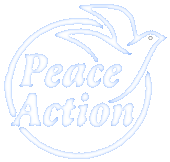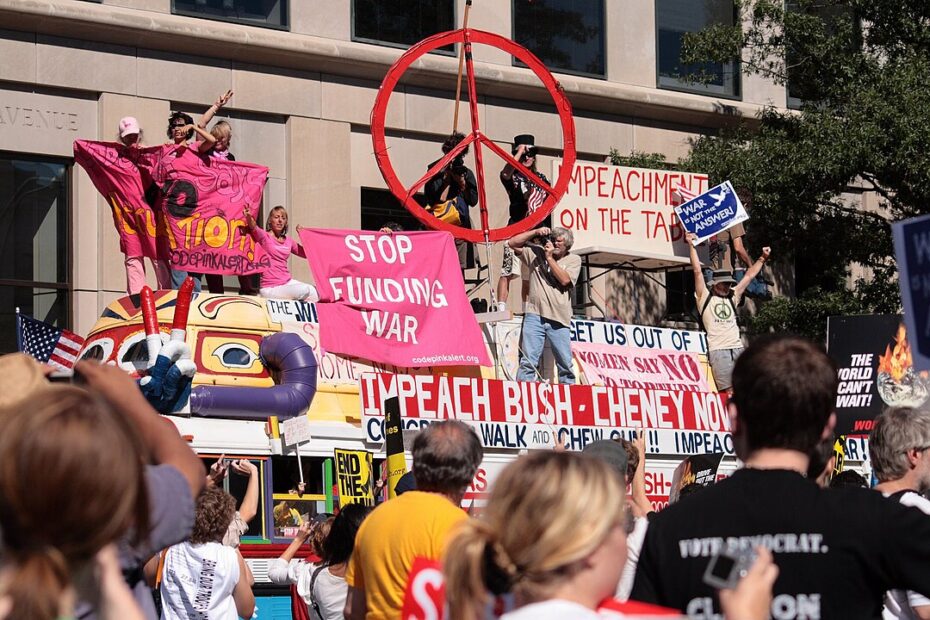Background of SACRAMENTO NUCLEAR WEAPONS FREEZE
1981-82: Californians for a Bilateral Nuclear Weapons Freeze collected thousands of signatures, qualified Proposition #12 (for a Freeze) for the Nov. 1982 ballot and passed it. Dr. Richard Hughes headed the Sacramento organization. March 1983: Formation of the SACRAMENTO NUCLEAR WEAPONS FREEZE, a non-profit, non-partisan volunteer group to do educational and lobbying work for a freeze on nuclear weapons. Affiliated with the National Freeze Campaign, Washington, D.C. (and with No. Cal. Freeze Campaign with 15 active chapters).
STRUCTURE:
7 Board members, elected at May Annual Meeting, each heading one facet of the work. Approximately 1000 members. Many committees.
ACTIVITIES:
- monthly newsletter
- tabling, petitioning, distributing educational materials
phone banking to reach members and friends with information and for funds phone tree for legislative alerts - quarterly public meetings
- sale of merchandise (buttons, bumper stickers, T-shirts)
- walks, marches, vigils
- speakers to schools/ groups
- collaboration with other local peace groups in events
FINANCES: (1985)
Income Source
37% monthly pledgers
28% donations]
23% raffle
4% tabling
Outgo
37% office/utilities
52% activities
19% newsletter
17% local Freeze events
16% coalition or regional events
FREEZE VOTER:
During electoral years support is given to Freeze Voter, our national political action fund, to influence selected congressional elections.
OFFICE:
Open daily 10-4 and several evenings 5:30-9 for phone banking.
909-12th Street (Box 11)- Room 125, in downtown Sacramento. 916-448-7157.
Background of the National Freeze Campaign
Late 1979: Randall Forsberg circulated “The Call to Halt the Nuclear Arms Race”, a paper soon endorsed by hundreds of groups and persons: for a bilateral (US-USSR), verifiable halt to testing, production and deployment of nuclear missiles and the aircraft designed to carry them.
March 1981: National Nuclear Weapons Freeze Campaign organized. Soon supported by 150 national and international groups. One or both houses of 23 state legislatures passed Freeze resolutions, as well as many Town Meetings and City and County Councils.
Fall 1982: Through referenda, resolutions and ballot propositions 30% of the American electorate, voted on the Freeze — 60% voted for. California Ballot Proposition #12 for A FREEZE was passed.
May 1983: House of Representatives passed a FREEZE resolution, 278-149. Currently: The Freeze is active in all 50 states. It is broad based and non- partisan. An annual convention of delegates makes policy.
In 1987, the national Nuclear Weapons Freeze and SANE (Committee for a SANE Nuclear Policy) merged to become SANE Freeze. (I believe SANE was established in the ’50’s.) Our local chapter went along with the merger, but proposed at a national convention that the name be changed to SANE Freeze Campaign for Global Security – this was accepted @1989.
There was dissatisfaction with the long name, so in 1993 the national convention adopted the name, Peace Action.
From its start, the Sacramento Nuclear Weapons Freeze rented space in the Lung Association building. The Lung’s executive director, Jane Hagedorn, is a longtime member and she has been generous with setting the rent. It would be very difficult for us if we were paying standard rent fees in Sac.
Nationally, Peace Action claims to be the largest grassroots peace group in the U.S. Membership has shrunk from the heydays in the 80’s. Last I heard it was in the range of 80-90,000. The largest membership is California Peace Action. Our chapter has often been cited as the most active local chapter in the network, and for a long while, we have been all-volunteer. I believe the last paid staff was in the late 80’s, and the problem was always trying to raise money for staff.
— History of Sacramento Area Peace Action – as gleaned by Winnie Detwiler, 1/27/06

